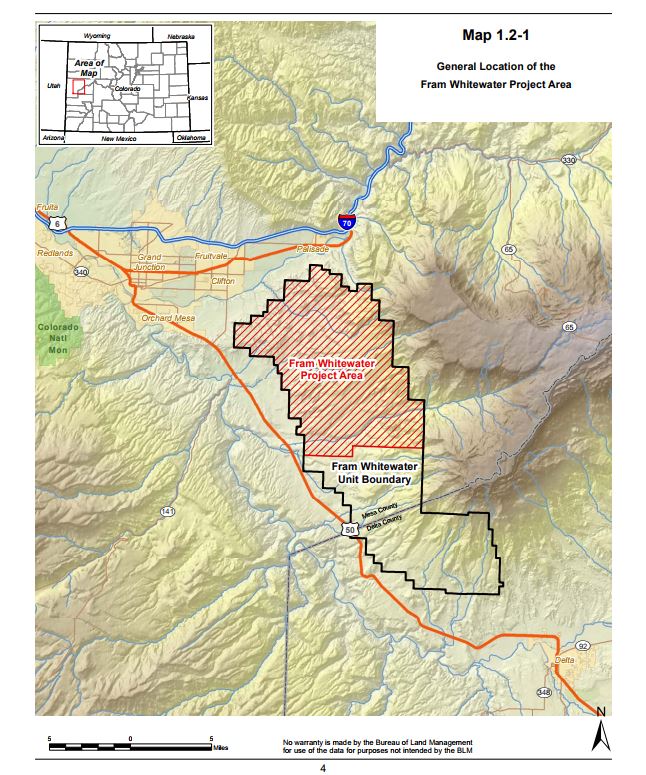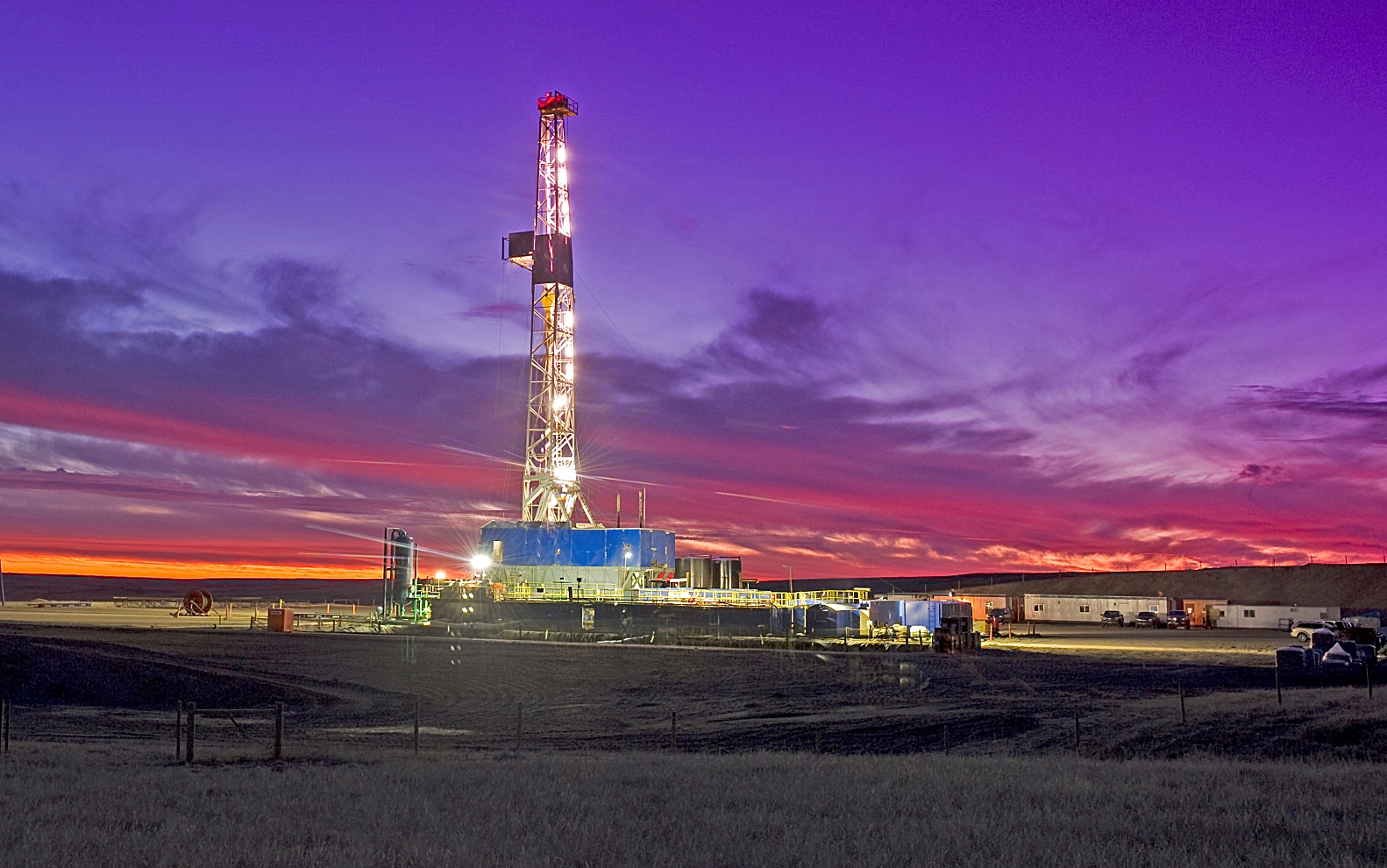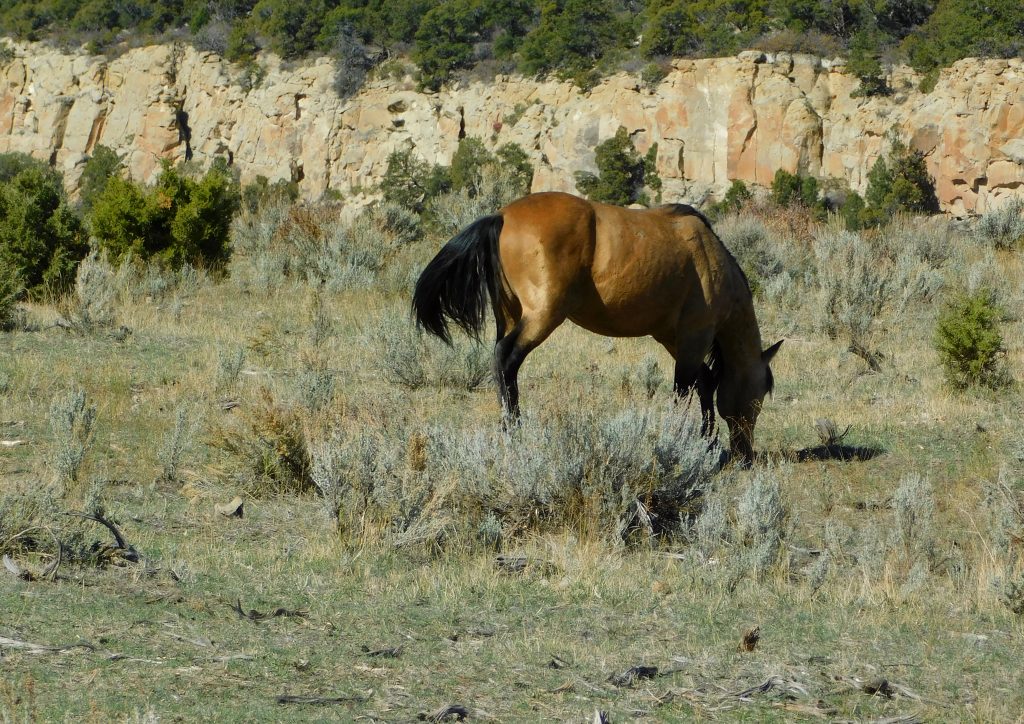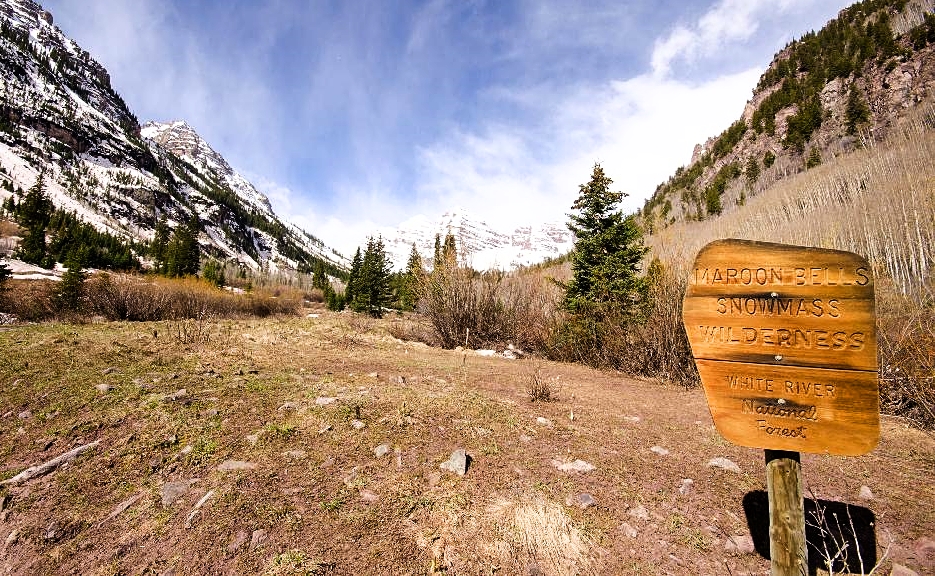Inevitably, there will be environmentalist groups opposed to this–and virtually all–hydraulic fracturing projects. But the philosophical change within the Interior Department regarding domestic energy development from ‘hands off’ to ‘all hands on deck,’ makes it more likely than ever that the Fram project is a go.
posted by Marjorie Haun
Much of rural America, especially those regions with economies based on traditional fossil fuel extraction industries, have struggled for years under punishing federal regulations and restrictions, and as a result have not been able to recover from the economic crash of 2008-2009. Western Colorado has some of the richest geological resources in the world, with vast caches of natural gas, shale oil, coal, uranium, and other treasured commodities. Hammered by regulatory setback, endless lawsuits from extreme environmental special interests, and a mixed state legislature with a strong anti-fossil fuel contingent, the Western Slope is eager for Trump’s Interior Department to release the strangle hold the previous administration had on these critical economic sectors.
In the pursuit of bringing energy jobs back to the region, last week, Mesa County’s Commissioners wrote a letter in support of Fram’s natural gas project in Whitewater, Colorado. The hydraulic fracking project in question has been stalled numerous times over the past 7 years for a variety of regulation-environment-related issues. The letter specifically comments on the Bureau of Land Management’s (BLM) revised Environmental Assessment (EA), with a general show of support and a few suggestions for minor revisions or adaptations.
Inevitably, there will be environmentalist groups opposed to this–and virtually all–hydraulic fracturing projects. But the philosophical change within the Interior Department regarding domestic energy development from ‘hands off’ to ‘all hands on deck,’ makes it more likely than ever that the Fram project is a go.
WesternSlopeNow reported on the Commissioners’ support for the project:
The Mesa County Commissioners have decided to send a letter of support for the project to the BLM for consideration. Some of the public comments at the meeting expressed concern about the proximity of the plan to the Greater Grand Junction watershed. “The water supples 60,000 people in Grand Junction and if something happens, if there’s an accident, there’s no going back,” said Karen Sjoberg, the chair of Citizens for Clean Air.
According to Fram, the project would create up to 8.7 million barrels of oil over 20 years, and provide about 70 jobs through both construction and year-round jobs. “That’s direct jobs and those are amongst the highest paying jobs in this county, and those jobs have a ripple effect,” said Scott McInnis, the chair of the Mesa County Commissioners.
The commissioners said this project will benefit the local economy, and that it has been thoroughly researched. “Sometimes I think they should step back and look at what they’re really asking for, and where we would be without these products,” said John Justman, one of the Mesa County Commissioners.
The letter also mentions important socioeconomic benefits to be reaped by struggling communities impacted by this proposed project. The Mesa County BOCC makes the following points:
•The board supports the “No significant impact” findings in the 2014 environmental assessment (EA) as related to use of an existing road to access the site in order to minimize environmental damage to wildlife range, agricultural operations, and residential properties.
•Impacts on sensitive winter wildlife range are minimized in the updated EA.
•The project will produce high-paying jobs in Mesa County, including “48 construction jobs and 22 year-round production jobs.”
•The BOCC makes an indirect suggestion that Fram consider using the nearby Deer Creek wastewater facility, as an alternative to transporting it to Dutch Flats, which is several miles west of the Utah border.
•The BOCC supports the enforcement of existing water regulations and adherence to permits in the area.
•The BOCC supports the EA conclusions regarding protections of watersheds and air quality in nearby communities, and encourages regular water monitoring throughout the the life of the project.

See the full text of the letter below:
Bureau of Land Management, Colorado River Valley Field Office
Dear BLM Official:
Thank you for the opportunity to comment on the Preliminary Environmental Assessment (EA) for the Updated Whitewater Unit Master Development Plan (UWMDP) as submitted by Fram Operating LLC (Fram). We understand the UWMDP includes an added analysis of the use of hydraulic fracturing (HF), which was not included in the original EA. The Mesa County Board of County Commissioners (Board) has commented and participated in this proposal extensively over the course of several years (see Mesa County letters in your files dated November 30, 2011, August 14, 2013, and October 2, 2013).
The Board appreciates the BLM’s cooperation and support of the Preferred Alternative in the 2014 Finding of No Significant Impact, which previously approved alternative uses for B Road as the wintertime northern access to minimize travel through sensitive winter wildlife range, an Orchard Mesa rural residential neighborhood, and the Fruit and Wine Byway during development activities.
The Board fully supports this project and offers the following comments for your review:
- Hydraulic Fracturing (HF) Process Alternatives
The Board supports the EA’s preferred HF process (Access Process) as it will minimize water use and truck traffic for the life of the project in comparison to the other two HF processes analyzed in the EA.
- Socioeconomics
The Board appreciates the use of updated socioeconomic data (2015) in the EA. It points out the significance of the project’s potential direct employment impacts, including 48 construction jobs and 22 year-round production jobs. These are high paying jobs in Mesa County and would impact many associated support activities for oil and gas operations in the region.
- Transportation
The Board appreciates the fact that the EA proposes the use of gathering pipelines for oil, gas and produced water to reduce project related truck traffic and supports the use of the B Road route as the winter access to the project.
The EA shows that hydraulic fracturing will significantly increase the traffic volumes on the road system compared to the initial EA. Fram and the BLM will need to coordinate closely with the Mesa County Public Works Department and the Colorado Department of Transportation (CDOT) on required updated studies and permits including, but not limited to: transportation impact studies, access permits, road improvements, transportation impact fees, surface alteration permits, underground and utility permits, overweight and oversize load permits, and road maintenance agreements and financial assurances.
Specific Comments
•Appendix D, Transportation Plan, Table 1 incorrectly states that B Road is maintained by Mesa County. B Road is not maintained by Mesa County east of 32 Road, but it is in Mesa County right-of-way. Fram can build the road to Mesa County standards and petition the road to become a maintained road. Otherwise, Mesa County would not be responsible for maintaining this road and a maintenance agreement would be required.
•Attachment A (Proposed Road Improvements) to Appendix D must be updated to include all required B Road improvements.
•Corrections are needed to page 172 of EA as follows: reference to Table 2.2-8 should refer to Table 4 in Appendix D; and reference to Table 2.2-9 should refer to Table 5 in Appendix D.
•The BLM needs to update the B Road traffic counts in Table 3.4-8 to include counts east of 32 Road (CO Hwy141). Without these counts, the discussion on percentage increases in current traffic on B Road is inaccurate. Traffic generated by the EA’s preferred hydraulic fracturing process (Access HF) is not referenced in the body of the EA at all, but it is included in Table 3 of Appendix D. Access HF should be included in the comparison of HF processes on page 173 of the EA.
- Produced Water Disposal
The EA (page 23) indicates “produced water would be collected and delivered by truck to the Deer Creek Facility owned by Alanco Energy Services. The Deer Creek Facility is located within the Whitewater Unit, south of the Project Area.” The Deer Creek Facility has a Mesa County Conditional Use permit and a Certificate of Designation through the State of Colorado. The Board understands Fram is not currently using the Deer Creek facility and is sending waste to Utah’s Danish Flats facility instead. The EA should be revised to include potential impacts on the transportation plan if produced water is to be delivered to Utah or another permitted disposal facility instead of the Deer Creek Facility.
- Water
The EA addresses the potential impacts of the project on municipal and agricultural water sources and systems in the area. The Board supports the EA’s requirement that all applicable state, county, federal and municipal regulations and permits be adhered to and enforced for activity within the area.
Mesa County was an active partner in drafting the Watershed Plan for the Town of Palisade and the City of Grand Junction. A portion of the project area coincides with the Grand Junction protected watershed. The Board supports the implementation of applicable measures in the City of Grand Junction Watershed Protection Ordinance and Regulations to minimize potential impacts from the project including activity at proposed well pads, construction and maintenance of access roads, pipelines, dust control and monitoring wells.
Since the EA anticipates using water from the City of Grand Junction for drilling and dust suppression, it is critical that the BLM follow through on the EA’s commitment to “provide updated estimates of consumptive water use, representing depletions in the Colorado River Basin, as a result of adding HF project related annual consumptive use would be reported by the BLM to the FWS for tracking of the annual per-basin and combined totals for western Colorado, as analyzed and disclosed in the PBO. The BLM and USFWS are currently collaborating to update the PBO. The project would comply with any additional or amended conservation measures associated with an updated PBO” (pages 123-124).
The Board understands the importance of ranching in the project area to the culture and economy in Mesa County. The EA should also address specific measures to ensure protection of the agricultural surface water and groundwater in the project area.
- Grand Valley Air Shed
The Board supports the addition of an air quality stipulation to restrict project related travel speeds on unpaved access roads and disturbed areas to not exceed 20 miles per hour. The updated EA should include a requirement of notification to Fram of any air quality alerts in the Grand Valley that might be impacted by the project.
- Facilities – Other Mesa County Permits
The Board appreciates the BLM’s requirements for Fram to obtain all necessary county, municipal, state and federal permits for the project. In addition to the transportation issues and permits discussed in relevant sections of the Mesa County Land Development Code include:
•Section 3.8, Conditional Use Permits, requires Conditional Use Permits for compressor stations, transmission pipelines, and various accessory uses. (Fram should contact Mesa County Planning Department concerning the two centralized petroleum, water and gas handling facilities).
•Section 5.2.16, Oil and Gas Drilling, requires site plan review for all oil and gas drilling operations.
•Section 3.19, Stormwater Construction Permits, requires Stormwater Construction Permits for land grading and disturbance.
•Section 5.2.9, Commercial Timber Harvesting and Large Construction Projects, is applicable to any large construction jobs hauling more than 4,500 tons of material within a one month period. Such projects are subject to restrictions on County roads.
•Section 7.16, Streets and Roads, applies to new private and public roads including standards for roads in the Grand Valley air shed related to fugitive dust.
•Section 7.6.7, Nighttime Light Pollution, all outdoor light sources mounted on poles, buildings, or trees to illuminate streets, sidewalks, parking lots, or other outdoor areas between the hours of 10:00 p.m. and 6:00 a.m. shall use full cutoff light fixtures, a light fixture in which no more than 2.5 percent (two and one-half) of its total output is emitted above 90 degrees from the vertical pole or building wall on which it is mounted.
- Mesa County Mineral and Energy Resources Master Plan
The Board is pleased the Lease Stipulations in Appendix B employ many of the suggested mitigation measures for oil and gas operations in the Mesa County Mineral and Energy Resources Master Plan (Energy Master Plan).
The Energy Master Plan suggests baseline water studies should be required prior to drilling and that there be on going water quality monitoring through the life of the project. We understand the only proposed water quality monitoring well in the EA is near the City of Grand Junction’s Juniata Reservoir. Given all of the water wells and critical irrigation infrastructure in the project area, the EA should analyze the need for additional water quality monitoring.
The project is located along the Grand Mesa Slopes. The visual impact stipulations in the EA appear to be consistent with the Energy Master Plan.
Thank you for your attention to our comments.
Sincerely,
Scott McInnis, Chair Rose Pugliese John Justman
[paypal_donation_button]
Free Range Report
[wp_ad_camp_3]



